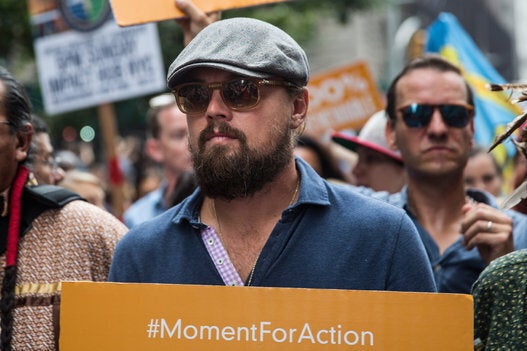This week the eyes of the world are turned towards Lima, Peru, and the UN climate talks known formally as the 20th gathering of the Conference of the Parties (COP 20). The road to progress in Lima is full of pot holes and is poorly illuminated, with dangerous hairpin turns and contradicting signposts -- not to mention the potential of frustrating detours.
For Canadians, progress on the road to Lima passes right through Langevin Block, home to the Prime Minister's Office. To date this road has been blocked.
Overcoming the challenge of climate change will not stop at Lima, of course. The best hope for COP 20 is that the international community arrives at a good first draft of an eventual agreement. The ultimate destination for this round of global climate negotiations is actually Paris, in December 2015. There the international community must sign a new binding agreement to drastically lower greenhouse gas emissions (GHGs). Such an agreement will supersede the Kyoto Accord, and take effect in 2020.
But Lima matters because each country will determine the amount that they will reduce emissions, referred to as Intended Nationally Determined Commitments (INDCs.) Countries will release their INDCs by the end of March 2015. Although nations don't need to reach a final agreement on INDC's at COP 20 in Lima, they do need to get their views onto the table before the meetings end, because they are critical to laying the groundwork for a 2015 deal in Paris.
The tougher issue in Lima is building an agenda for action before 2020. This would commit nations to act more immediately to limit their emissions, and in particular, demand a quick transition away from dirty fossil fuels and towards clean energy solutions.
At the September 2014 UN Climate Summit in New York City, Secretary General Ban Ki-moon received 100 heads of state in an attempt to increase ambition on the road to Lima and Paris. Prime Minister Harper was in town, but did not attend the Summit. His Environment Minister, Leona Aglukkaq, delivered a speech devoid of novelty to a small and mostly disinterested crowd. Nonetheless, over 300,000 citizens (among them many Canadians) took to the streets, demanding climate action.
While Ottawa stalled, the World Meteorological Organization reported on December 3 that 2014 may be the hottest year in history. If November and December maintain the same tendency as the previous ten months, 2014 will likely be the hottest on record, ahead of 2010, 2005 and 1998. Reversing this trend means nations must commit to serious emissions reductions quickly -- and the time period between the Lima and Paris climate negotiations becomes the perfect opportunity for that action to be taken.
The stated commitment of nations (set at the 2009 COP meeting in Copenhagen) is to keep global warming from increasing more than 2 degrees Centigrade (since the Industrial Revolution.) Yet, climate scientists increasingly question whether the specific Copenhagen commitments (for Canada and the USA, a promise to reduce GHGs 17 per cent below 2005 levels by 2020) will be enough to keep average temperatures from rising well above this target.
In spite of a divided Congress, the US, under President Obama's leadership, may very well meet their stated goal. Additional momentum for moving ahead in Paris was secured on November 12th when the USA and China (the two largest emitting economies) jointly announced renewed ambition to lower GHG emissions. Obama pledged the United States would reduce its emissions by 26 per cent from 2005 levels by 2025. In Canada, unfortunately, there is no chance of our country meeting even the modest 2009 goal, let alone stepping up to meet the US goal.
In October 2014, the Commissioner of the Environment and Sustainable Development released a damning report detailing Canada's failure to meet the government's promised climate goals. According to Julie Gelfand, "Environment Canada lacks...an effective planning process for how the federal government will contribute to achieving [our climate] targets." Most of the progress in reducing emissions has come as a result of provincial initiatives, she said. Regulations on the oil and gas industry (promised for years by Conservative Environment Ministers) have been "repeatedly delayed," and "current federal measures will have little effect on emissions by 2020."
What Canadian roadblocks on the road to Paris lie ahead?
Starkly stated: oilsands and pipelines.
The Athabasca oilsands are the fastest-growing source of GHGs in Canada, and these emissions could double or even triple if planned growth there proceeds. But as the International Energy Agency has reported, about two-thirds of all proven reserves of oil, gas and coal will have to be left undeveloped if the world is to achieve the goal of limiting global warming at two degrees Celsius.
Related to oilsands expansion is the thorny question of pipeline construction to get bitumen to markets, including to international customers. The Pembina Institute calculates, for example, that the Energy East pipeline would add 32 million tonnes of GHG emissions every year, equivalent to the important reductions Ontario achieved when it shuttered its coal-fired plants. No wonder more than 160 institutions, local Governments and more than 500 individuals committed to divesting $50 billion from fossil fuel investments and reinvest in new energy sources -- people are confronting the energy industry even if governments will not.
What now seems overwhelmingly clear is that the road to Lima, and on to Paris, can be unblocked only at the corner of Wellington and Elgin streets, where the Prime Minister's Office sits.
MORE ON HUFFPOST:
